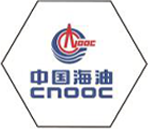
10 月 . 05, 2024 02:03
Back to list
pneumatic control valve
Understanding Pneumatic Control Valves An Essential Component in Automation
Pneumatic control valves play a critical role in the automation of various industrial processes. By regulating the flow of compressed air, these valves allow for precise control over machinery and processes in numerous applications, including manufacturing, packaging, and robotics. This article delves into the importance of pneumatic control valves, their operation, types, and applications.
What are Pneumatic Control Valves?
Pneumatic control valves are devices that manage the flow and direction of compressed air in a pneumatic system. They function by opening, closing, or partially obstructing air passageways, thereby controlling the amount of air that reaches actuators, cylinders, or other components within the system. The operation of these valves is integral to achieving accurate motion control and automation within industrial settings.
How Do They Work?
At the heart of pneumatic control valves is their ability to respond to pressure and electrical signals. When a control signal is received, the valve adjusts its position—either opening or closing—based on the pre-set parameters that define its operational behavior. This action allows air to flow to specific parts of a system, enabling precise control over speed, position, and force applied by actuators.
Most pneumatic control valves use a spring mechanism combined with a diaphragm or piston that moves against a seat. Upon receiving a signal, the valve's spring compresses or decompresses, shifting the diaphragm or piston and allowing air to flow through or blocking it. The control can be manual or automated, with automated systems commonly employing electronic control units to manage the signals that dictate the valve's behavior.
Types of Pneumatic Control Valves
There are several types of pneumatic control valves, each designed to meet specific requirements in industrial applications
1. Directional Control Valves These valves manage the flow path in a pneumatic system. They can be two-way or three-way, allowing for multiple pathways for air to travel and thus enabling complex motion controls.
pneumatic control valve

2. Flow Control Valves These regulate the speed of actuators by controlling the flow rate of the air. Adjusting the valve affects how quickly or slowly an actuator will move.
3. Pressure Relief Valves These ensure that the pressure within a pneumatic system does not exceed a certain threshold, thereby preventing damage or failure of components.
4. Solenoid Valves Controlled electrically, these valves are often used for quick, precise actions and can be integrated into automated systems for enhanced control.
Applications of Pneumatic Control Valves
Pneumatic control valves are found in a multitude of industries, serving various functions
- Manufacturing In assembly lines, pneumatic valves control automated arms and machinery that perform tasks such as picking and placing components. - Packaging Pneumatic systems are used for sealing, filling, and labeling products. The precise control offered by pneumatic valves is essential for maintaining consistent quality and speed.
- Robotics Many robotic systems utilize pneumatic actuators, which require robust control solutions to execute complex movements.
- Transportation In the automotive sector, pneumatic control valves are used for systems such as braking and suspension, contributing to improved performance and safety.
Conclusion
In conclusion, pneumatic control valves are indispensable in modern industrial automation. Their ability to regulate air flow with precision allows businesses to enhance efficiency, reduce operational costs, and improve safety. As industries continue to innovate and upgrade their automated systems, the demand for advanced pneumatic solutions, including control valves, is likely to grow, prompting further advancements in technology and design. Whether in manufacturing, packaging, or robotics, the impact of pneumatic control valves is profound, shaping the future of automated processes.
Latest news
-
Unlocking The Quality Gas Pressure ReducersNewsNov.01,2024
-
The Role of Gas Pressure Reducing StationsNewsNov.01,2024
-
The Importance and Functionality of Safety Relief ValvesNewsNov.01,2024
-
The Essential Role of Safety Valves in Natural Gas ApplicationsNewsNov.01,2024
-
The Essential Role of Gas Pressure RegulatorsNewsNov.01,2024
-
Enhance Your Premium Gas FiltersNewsNov.01,2024

